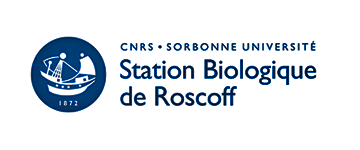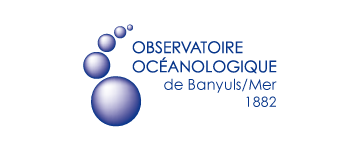Summary
Oceans are particularly affected by the global change, which notably causes an increase in seawater temperature and an expansion of iron (Fe)-poor areas, whilst Fe depletion is already impairing phytoplankton growth in as much as 35 % of the global ocean. This raises the questions of the capacity of local marine phytoplanktonic populations to adapt to these harsh conditions and of the consequences of Fe depletion on the ocean ability to sequester CO2 via the biological carbon pump. In this context, the recent discovery of one clade (CRD1) of the marine cyanobacterium Synechococcus predominating in low-Fe niches, with three genetically distinct populations displaying different temperature ranges, constitutes a unique opportunity to unveil the combined effects of Fe depletion and temperature on phytoplankton at all scales of organization from the gene to the ecosystem.
The CINNAMON project will use a systems biology approach, combining laboratory and field work, to characterize and model the main acclimation (physiological) and adaptation (evolutionary) mechanisms involved in the differential responses of Synechococcus ecotypes to Fe limitation and temperature variations, with the goal to better predict their respective adaptability, and hence future distribution and dynamics in a changing environment. First, we will validate the occurrence of distinct Fe and/or temperature ecotypes within the CRD1 clade, notably by delineating the growth optima and boundary limits for Fe and temperature of representative strains. In parallel, the comparison i) of genomes of marine picocyanobacteria (about 60 Synechococcus genomes, including at least one for each CRD1 genotype and 2 low-Fe Prochlorococcus metagenomes) and ii) of transcriptomes from different CRD1 and control strains generated in response to +Fe/-Fe, should allow us to decipher the genetic basis of their specific adaptability to changes in temperature and Fe availability. These data will also be integrated into co-expression and metabolic networks in order to determine the respective role of metabolic vs. regulatory pathways in the differential behavior of the tested strains when subjected to Fe depletion and high/low temperature. A last approach will consist in using meta-omics data from major global ocean surveys (Tara-Oceans, Tara-Polar Circle, Tara-Pacific and Malaspina expeditions) covering a wide range of oceanic regimes to validate at the population level the observations made on representative strains, but also to identify additional genes and biosynthetic pathways potentially responsible for the capacity of these ecotypes to adapt to cold or warm, low-Fe regions of the world ocean. Altogether, this cross-scales approach from the genes to the global ocean should allow us to delineate a limited set of ecotype- and/or niche-specific genes that are differentially expressed in response to Fe availability. Such genes will constitute privileged targets for further functional analyses, including gene inactivation followed by physiological characterization of mutants, to better understand molecular processes underlying adaptation to low Fe niches.
The CINNAMON project is both ambitious by the extent and variety of analyses that will be made and innovative since results will not be limited to a model Synechococcus strain, but will take into account the ecotypic variability within this major component of the oceanic ecosystem. Results will thus be of both evolutionary and ecological interest as they should allow us to better understand i) how iron availability has driven genetic diversification within picocyanobacteria, but also ii) the consequences of this diversification on the community composition and dynamics of these key organisms, in the context of global change. A major societal goal of the project will be to raise awareness among general public about the impact of global change on marine biodiversity and to provide tools to stakeholders to monitor these effects.








